From civil rights leaders to artists and musicians, black Americans have played a vital role in shaping our country’s past and present. One way to honor this legacy is by visiting local black historical landmarks and sites. These places not only provide a glimpse into the past, but they help us understand the struggles and triumphs of those who came before us. There are an abundance of black historical landmarks and sites in our area where you can learn more about our history.

The Bordentown School in Bordentown, Burlington County
It was called the “Tuskegee of the North,” although it was formerly known as the New Jersey Industrial and Manual Training School for Colored Youth. Eventually, it was best known simply as the Bordentown School, a leader in black education from Reconstruction until the 1950s. Founded in 1876, Bordentown was a boarding school for boys and girls in grades 6 through 12. With its 400-acre Georgian style campus, Bordentown could be mistaken for an elite private boarding school. But it was actually a coeducational public school operated by the State of New Jersey which, in addition to studying traditional academic subjects, taught students how to operate farm equipment, maintain buildings, prepare meals, and work in the beauty industry.

Dr. James Still Historic Site
The mission of the Dr James Still Historic Site and Education Center is to preserve and interpret the legacy of Dr. James Still, known as the “Black Doctor of the Pines,” and the town he called home. The site was the first African-American site purchased by the State of NJ for historic preservation.
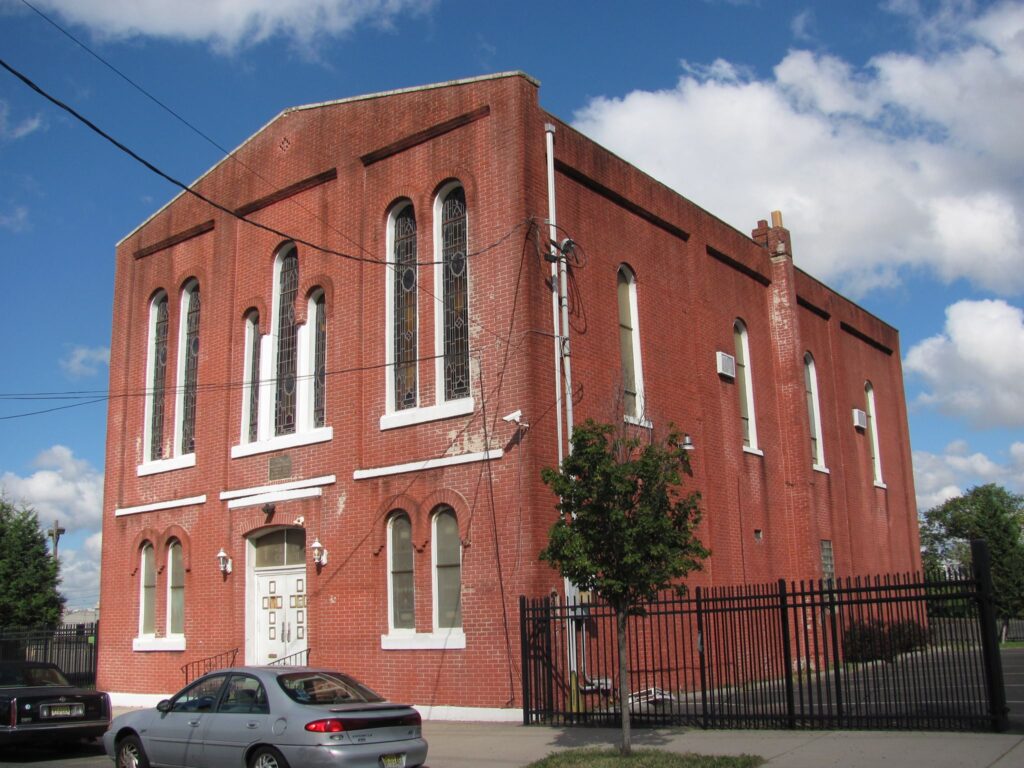
Macedonia African Methodist Episcopal in Camden
Historic Macedonia AME Church where a small, loving congregation enjoys bible-based teaching and the opportunity to worship and praise the Lord Jesus Christ.
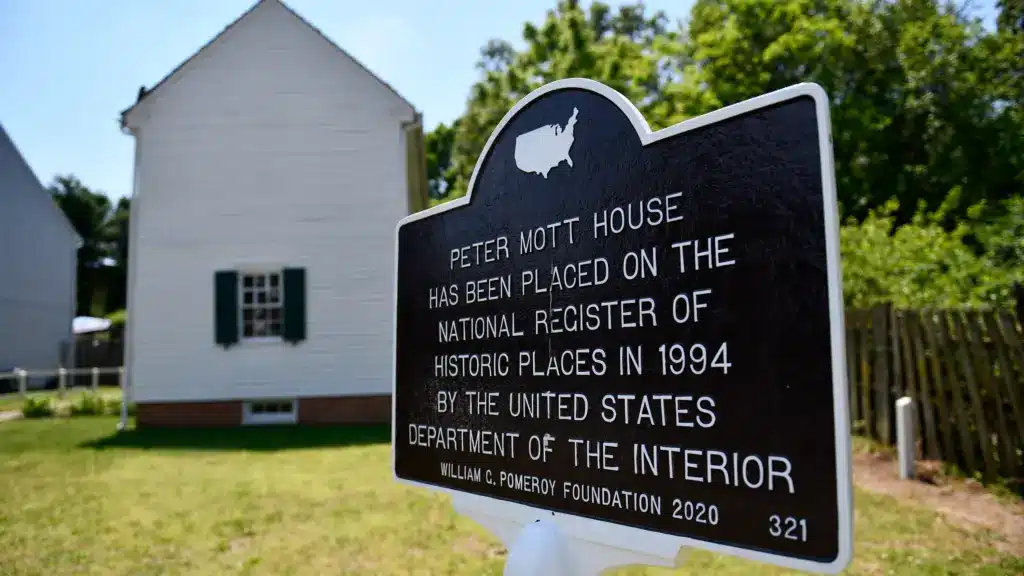
Peter Mott House in Lawnside
As the only African American incorporated municipality above the Mason-Dixon Line, Lawnside, NJ was a haven to people of African descent since colonial times. Some residents can still trace their lineage to shrewd people who purchased their freedom, were manumitted or escaped here through the secret network of abolitionists known as the Underground Railroad.
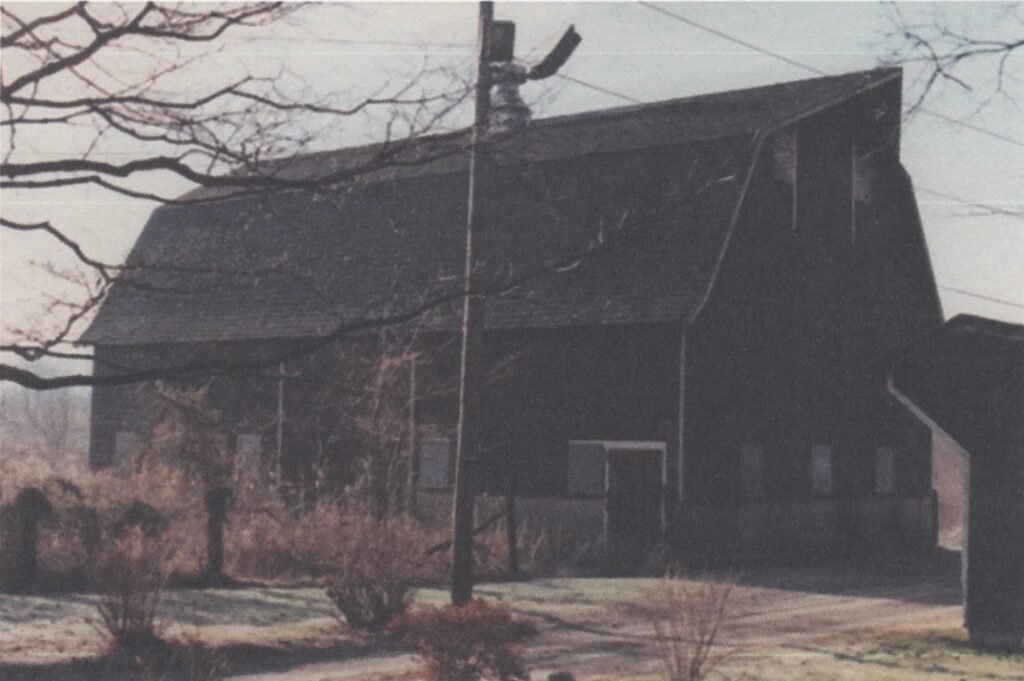
Croft Farm
The history of Croft Farm dates back to the 18th century when early owners of the property utilized its proximity to Cooper Creek to build mills on the waterway. For the next 200 years, from 1697-1897, four different mills earned both the Kay and Evans Families their livelihood.
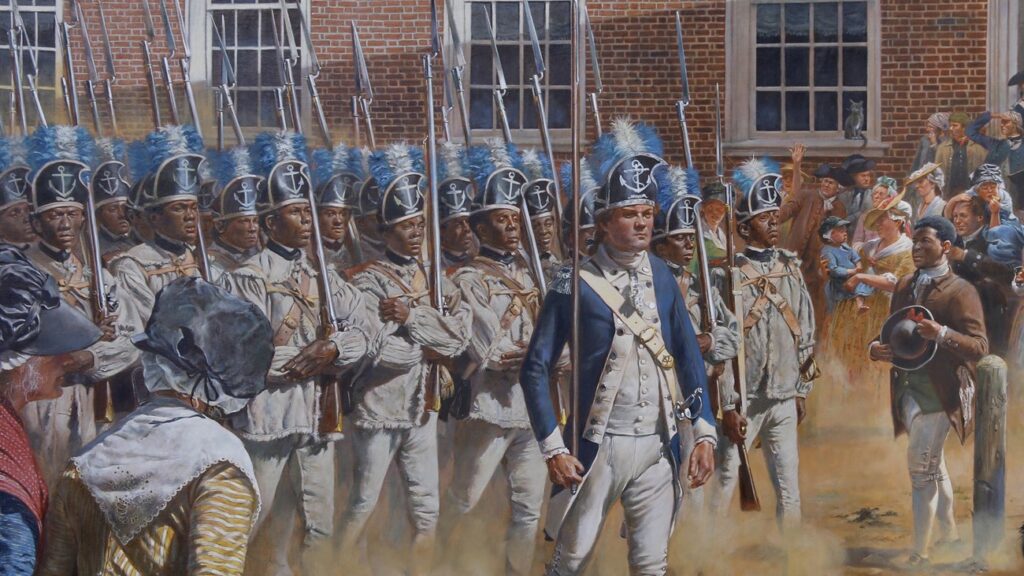
Mount Zion African Methodist Episcopal Church
The National Park Service preserves and protects powerful places – the physical memory of our nation’s history. Locations related to the Underground Railroad are part of the Network to Freedom program. The locations in this program include National Park units, as well as locations with a verifiable connection to the Underground Railroad. Visiting these places – virtually or in person – allows you to form your own connections to the story of the Underground Railroad in America.

Richardson Avenue School in Swedesboro
Opening in 1931, Richardson Avenue School was the state’s last “separate-but-equal” school that served the African American population in the Borough of Swedesboro until 1942. It is the only segregated school structure still standing in New Jersey. Constructed for the Mt. Lebanon Lodge of Free and Accepted Masons, the structure over the years has housed many cultural and social activities for the African American community. Because of the inferiority of the building, Thurgood Marshall met with the Swedesboro Board of Education, but his arguments were met with deaf ears. In 1998 the Richardson Avenue School was listed on the State and National registers of Historic sites.
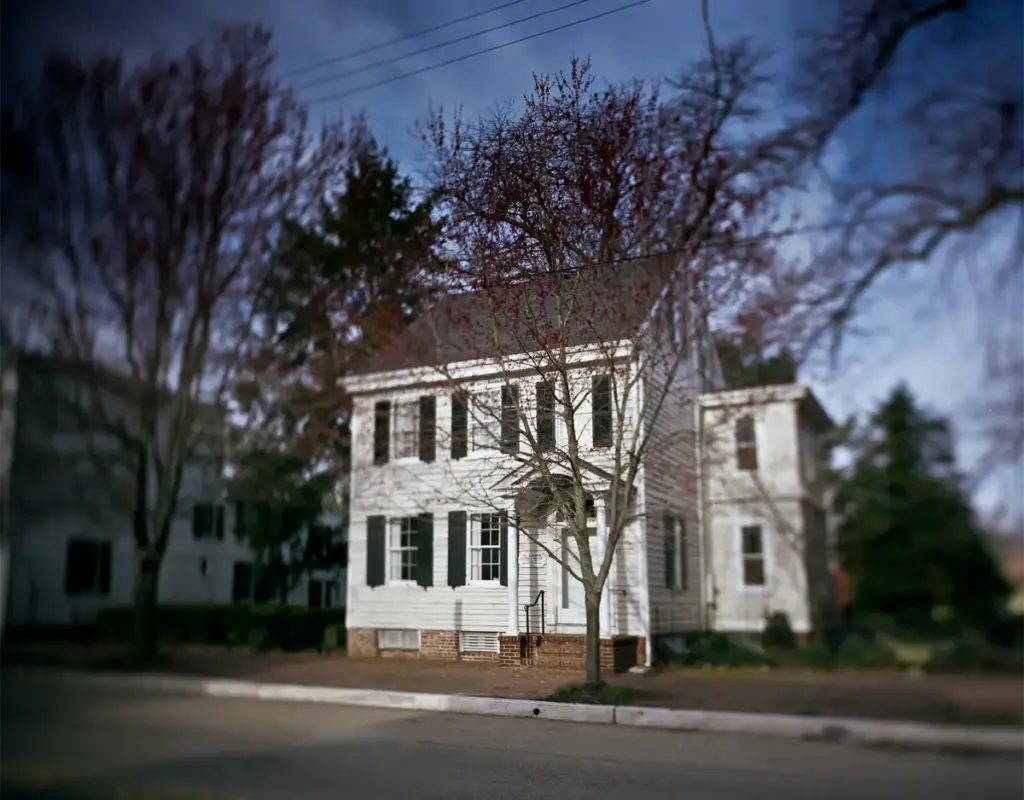
Goodwin Sisters House
Humanitarian work shaped the lives of the Goodwin sisters, Elizabeth (1789-1860) and Abigail (1793-1867). Daughters of a Quaker farmer who had freed, or manumitted, all his slaves during the American Revolution (1), both sisters were founding members of the Female Benevolent Society of Salem, NJ, an organization dedicated to aiding the poor, infirm and elderly.
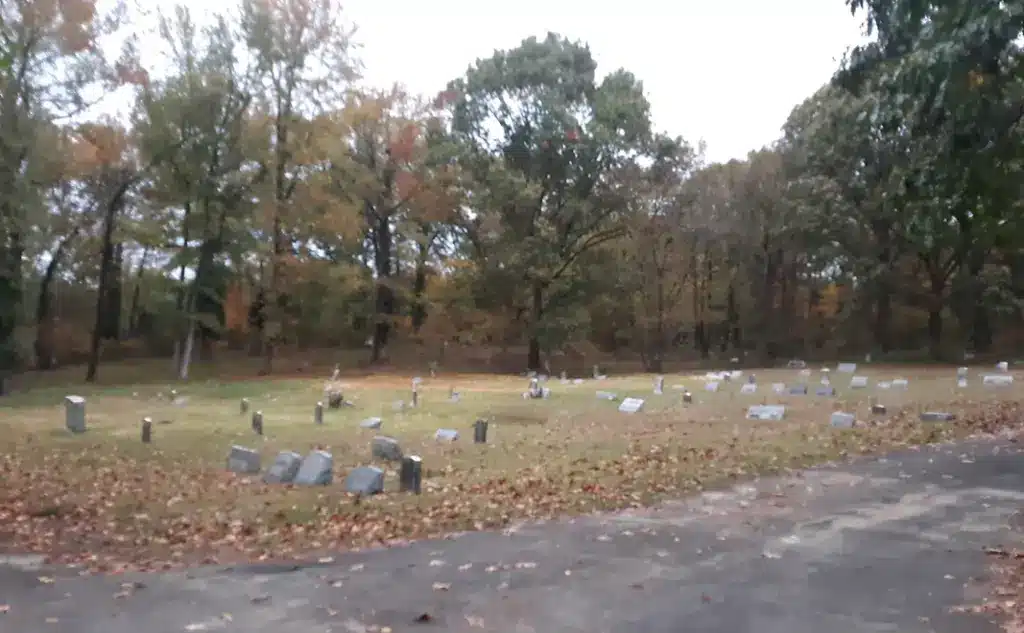
Mount Peace Cemetery
At Mount Peace we are dedicated to preserving the past by inspiring future generations. The cleaning of headstones takes patience and attention to detail and this simple act can restore an abundance of history to learn from.
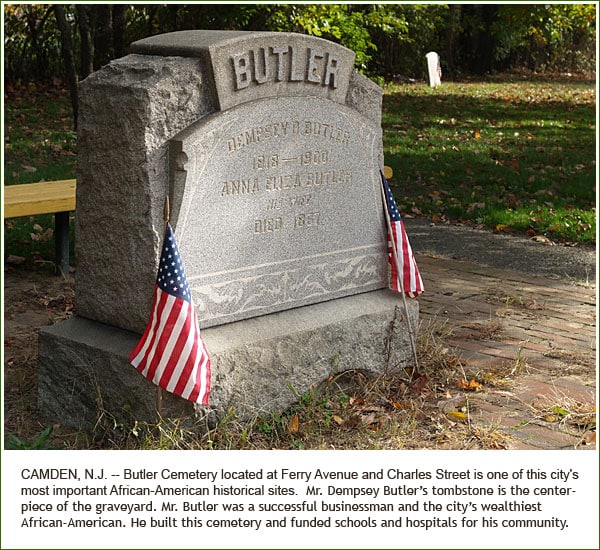
Butler Cemetery
Butler Cemetery, located at Ferry Avenue and Charles Street, is one of this city’s most important African-American historical sites. Established in the 1800s by Dempsey Daniel Butler, it is the resting place of local U.S. Colored Troop veterans of the Civil War as well as other African Americans. Mr. Dempsey’s tombstone (above, left) is the centerpiece of the graveyard. Above, right, is the stone of Civil War veteran James Hardcastle, who served in Co. C, 25th Regiment of the U.S. Colored Troops. He is typical of the Civil War veterans buried here.

Oliver Cromwell House
Visit the former Lord Protector’s family home, the only residence still in existence other than Hampton Court. Following a refurbishment, our House now boasts a completely re-vamped Civil War Exhibition with impressive interactive displays and interpretations. You’ll have the opportunity to try on costumes and try out the games of the time as well as truly experience what life was like on the battlefields during the English Civil War in our new mini encampment. Audio handsets bring the story of the impressive Oliver Cromwell House vividly to life.
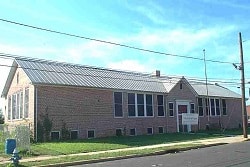
William R. Allen School
The William R. Allen School illustrates the development of segregation as an educational policy in New Jersey. Quakers established schools for black children in Burlington as early as 1804. The present building, constructed in 1900, occupies the site of the earlier Federal Street School for Colored Children built in 1870.

Burlington Pharmacy
Built in 1731 and established as a pharmacy in 1841 ( New Jersey ‘s oldest pharmacy in continuous operation), this building, according to oral tradition, was used frequently to harbor UGRR fugitives. It was owned by William J. Allison, a Quaker, ardent abolitionist, and community benefactor, who also used it as a forum for anti-slavery ralliec The Greenleaf Whittier is said to have denounced the evils of bondage from the doorstep of this building.

Burlington Island
The Borough of Lawnside (formerly known as Snow Hill /Free Haven) is in Camden County and is famous for its African American history. Additionally, it was one of the first places in New Jersey to be recognized as a vibrant black community. In 1659, black people began to appear and settle on the land, which was also called “Burlington Island.” By the end of the eighteenth century, the county had the largest population of freed slaves in the entire State.
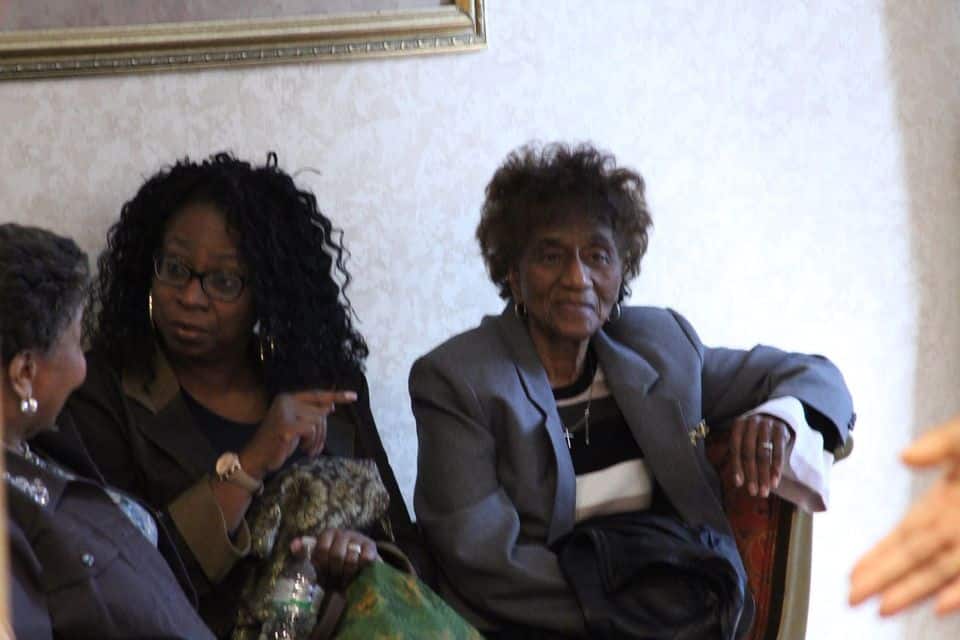
Bethlehem African Methodist Episcopal Church
Our vision is to share the word of God so as to transform lives inside the church as well as outside. Bethlehem means, “House of Bread.”
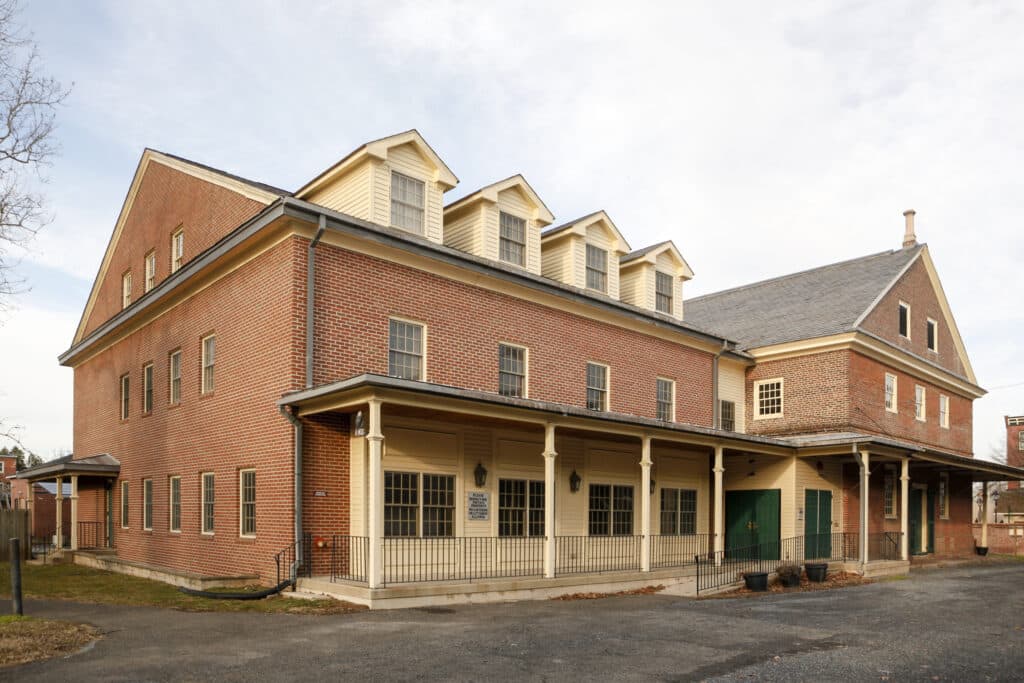
Burlington Friends Meeting House
Philadelphia Yearly Meeting was founded in Burlington in 1681. The original meetinghouse here was finished in 1687, hexagonal in design and the alternate-year site of Philadelphia Yearly Meeting until 1760. Construction of the present meetinghouse was started in 1783 (finished in 1784) in front of the site of the hexagonal meetinghouse. Renovations were made and the conference center was added in 1995. Chief Ockanickon of the Mantas Lenape tribe and notable Quakers are buried in the graveyard. The oldest dated marker appears to be “D.B. 1726.”
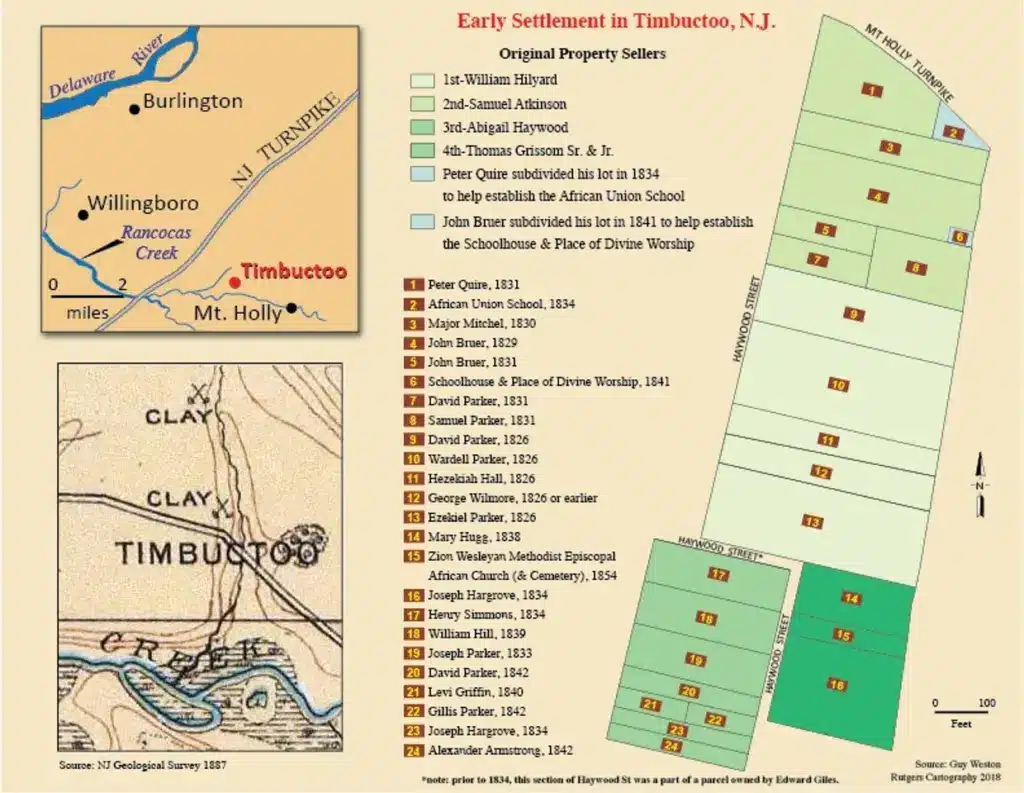
Timbuctoo
Settlement in what would later be known as Timbuctoo began in September of 1826, when David Parker, Wardell Parker, Ezekiel Parker, and Hezekiah Hall purchased parcels of land from a Quaker businessman named William Hilyard. The four buyers were already residents of Burlington County at the time, but they all had previously escaped enslavement in Maryland. The fifth recorded purchase was by John Bruer in 1829. The seller in that case was a Quaker farmer by the name of Samuel Atkinson. Over the next two decades, about two dozen land transactions would occur, including homesteads, as well as a school, a church, and a “schoolhouse and place of divine worship,” which appears to have been used for schooling as well as worship services.
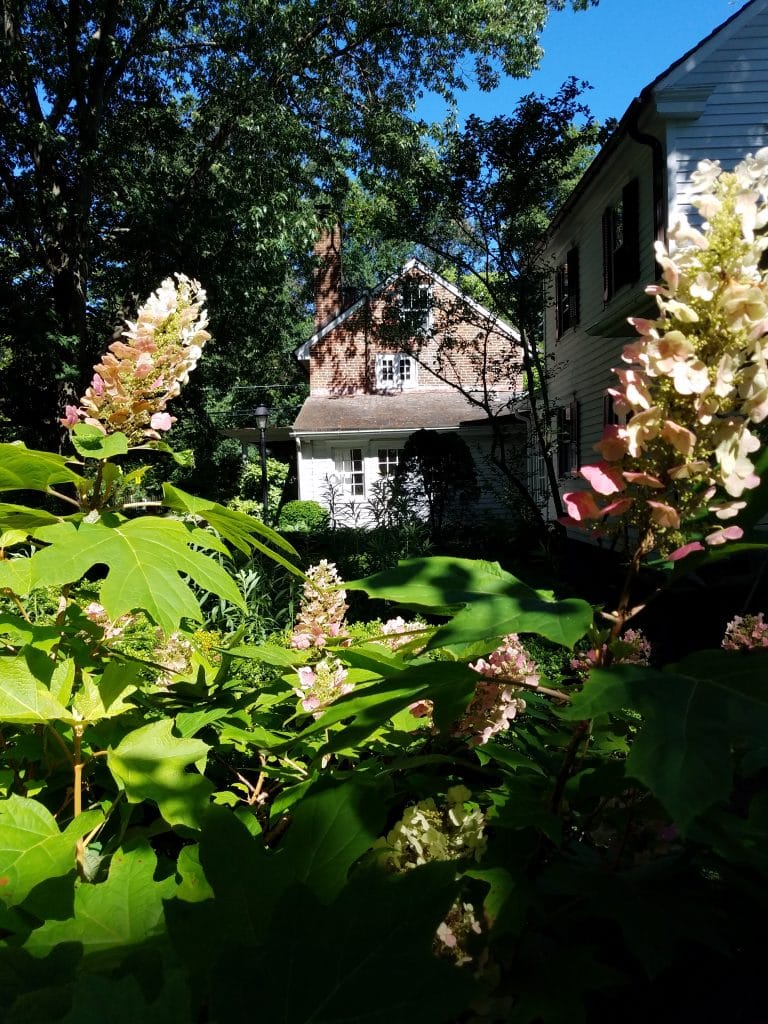
John Woolman House
In 1915, Historian Amelia Mott Gummere and a small group of faithful Quakers formed the John Woolman Memorial Association and purchased a house in Mt. Holly, New Jersey thought to have a direct association with John Woolman and his daughter Mary. Since that time the house and property have served to commemorate John Woolman and his life and service to all God’s creation.
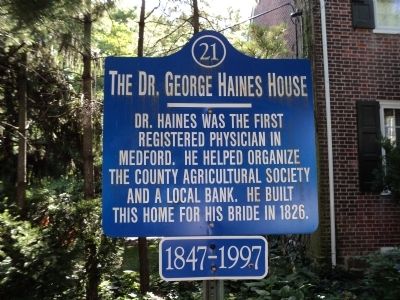
Dr. George Haines Residence
Dr. Haines was the first registered physician in Medford. He helped organize the County Agricultural Society and a local bank. He built this home for his bride in 1826.
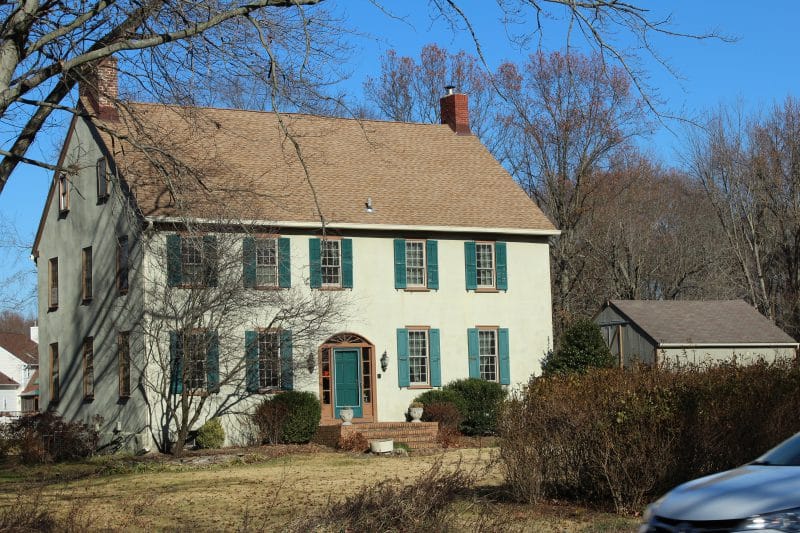
Isaac Evans/Thomas Evans House
The Evesham Historical Society is a non-profit, non-governmental organization dedicated to understanding, preserving, and sharing history of Evesham Township in an effort to promote a better appreciation of our American heritage. In 1988, the Historical Society took ownership of the John Inskeep/Higginbotham property, consisting of an early 18th century farmhouse, privy, and surrounding lawn. The old butchers shop, originally located on East Main Street, has also been moved to the site. Through the efforts of society members, two floors of the house have been refurbished and furnished as a museum of local history, including a display of Native American artifacts, a colonial kitchen, and an old school room. A dining room, meeting room, and four bedrooms display furniture, toys, clothing, and other articles from the 18th and 19th centuries. An herb garden, orchard, and flowerbeds now surround the house. The society continues in its efforts to refurbish the buildings, maintain the property, provide public access to the museum, and to promote interest in Evesham’s past.

Jacob’s Chapel African Methodist Episcopal Church
uilt in 1867, Jacob’s Chapel is one of the oldest African Methodist Episcopal (AME) churches in the region. Located in Mount Laurel, New Jersey, we open our doors to worship God, honor our past, and serve our community. We look forward to connecting with you and sharing our rich history.
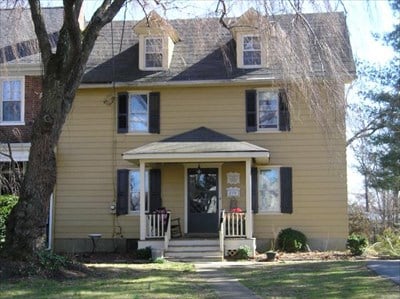
Elisha Barcklow House
This is but one of many 18th & 19th century homes lining West Main Street in historic Moorestown, NJ. All of these homes are contributing structures to the Moorestown Historic District found on the National Register of Historic Places.

Trinity African Methodist Episcopal Church
Since 1880, God has bestowed many blessings on our church. Through the prayers, faith, generosity and sacrifice of our church forefathers, we have this beautiful worship space. We are grateful for their grand vision and for the opportunity to worship where many generations have worshiped for the last century. Through world wars, economic instability, and cultural turmoil Trinity African Methodist Epsicopal Church has stood as a beacon of hope and healing for Long Branch and the surrounding communities.
